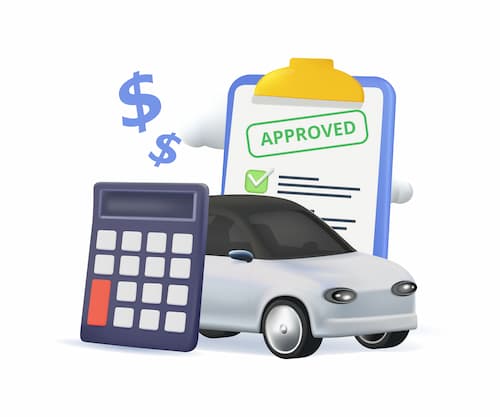Why do insurers use gender when devising auto insurance rates?
Insurance is based on risk. Statistically, males are more likely to get in accidents, get tickets and get arrested for DUI. Men are also more likely to drive a car that’s more costly to insure.
Car insurance companies use many factors when creating rates:
- Gender
- Claims history and severity
- Age
- Your residence
- Credit score
- Marital status
- Type of vehicle
Insurers don’t weigh them all the same. Underwriting departments vary on how much importance they put on each. However, gender is used in most cases because it offers a statistically significant risk factor for having to pay a claimAn insurance claim is a request you make to your insurance company for coverage after your car is damaged or you have an accident. You can file a claim online, by phone, or in writing..
What gender pays more for car insurance?
Male drivers often pay more for car insurance in comparison to female drivers, but there are exceptions.
Rates fluctuate based on age, as well as the insurance company. Female drivers from age 16 to 24 pay, on average, between $500 and $800 a year less for car insurance compared to their male counterparts, according to Insurance.com's rate analysis.
That rate data shows around age 30, males and females even out, with males even paying a few dollars less at age 40, on average. After age 50, females start again to pay less, but less than $50 annually.
Here are the average rates by age and gender:
| Age | Female | Male | $ difference male vs. female |
|---|---|---|---|
| 16 | $6,782 | $7,625 | $843 |
| 20 | $3,305 | $3,759 | $454 |
| 25 | $1,956 | $2,063 | $107 |
| 30 | $1,665 | $1,681 | $16 |
| 40 | $1,586 | $1,583 | -$3 |
| 50 | $1,487 | $1,494 | $7 |
| 60 | $1,427 | $1,444 | $17 |
| 70 | $1,541 | $1,586 | $45 |
The numbers above are averages, but you can find wide variations depending on the company. Amica, for example, has the same rates regardless of gender but varied based on age. Other insurers, like State Farm, have rate differences by gender only for some ages.
As this chart shows, it’s vital that you shop around when buying auto insurance, so you find a plan that makes the most sense to you for the cheapest rates.
| Company | Female, 25 | Male, 25 | Female, 40 | Male, 40 | Female, 65 | Male, 65 |
|---|---|---|---|---|---|---|
| Allstate | $2,313 | $2,391 | $2,087 | $2,086 | $1,961 | $1,988 |
| American Family | $1,557 | $1,629 | $1,334 | $1,362 | $1,312 | $1,307 |
| Amica | $1,528 | $1,528 | $1,341 | $1,341 | $1,489 | $1,489 |
| CSAA | $2,725 | $2,799 | $2,386 | $2,453 | $2,255 | $2,348 |
| Erie | $1,582 | $1,567 | $1,276 | $1,254 | $2,255 | $2,348 |
| Farmers | $2,221 | $2,322 | $2,062 | $1,980 | $1,878 | $1,933 |
| GEICO | $1,435 | $1,456 | $1,266 | $1,266 | $1,181 | $1,177 |
| Mercury | $2,649 | $2,770 | $2,367 | $2,167 | $2,154 | $2,252 |
| Nationwide | $1,383 | $1,460 | $1,193 | $1,190 | $1,058 | $1,086 |
| Progressive | $1,993 | $2,018 | $1,736 | $1,686 | $1,552 | $1,594 |
| State Farm | $1,609 | $1,764 | $1,436 | $1,436 | $1,288 | $1,288 |
| USAA | $1,444 | $1,520 | $1,170 | $1,192 | $1,088 | $1,115 |
Why do teens pay the most for auto insurance?
Teen drivers are the riskiest age group to insure. They're inexperienced and cause more crashes.
According to insurance.com research, 16-year-old males pay on average $843 more than their female counterparts. The good news is that as these young male drivers age and get more experience, their costs and the differentiation between females of the same age drop.
At 20, they pay on average $454 more than females; at 25, the difference drops to $107.
While this information is the average, remember everything varies by state.
"In Massachusetts, all drivers who have less than six years of driving experience pay significantly higher premiums regardless of age. If you don't get your license until you're 25, you're going to pay more until you're 31," says Megan MacBey, account executive at Eagle Insurance Group, in Raynham, Massachusetts,.
According to MacBey, all is not lost if you are a young or inexperienced driver.
"There are some discounts geared toward inexperienced operators. Some insurers will offer credits for completed defensive driving courses. There is also a good student discount, which if the driver maintains a 3.0 or better in high school or college, can earn credits [on a policy]. All companies are different as far as credits available, so the driver should check with their agent/company to find out what is available specifically for them."
Methodology: Insure.com commissioned Quadrant Information Services in 2022 to get quotes for a 2021 Honda Accord LX for a policy with coverage of 100/300/100 with a $500 deductible across multiple ages, companies and all states.



